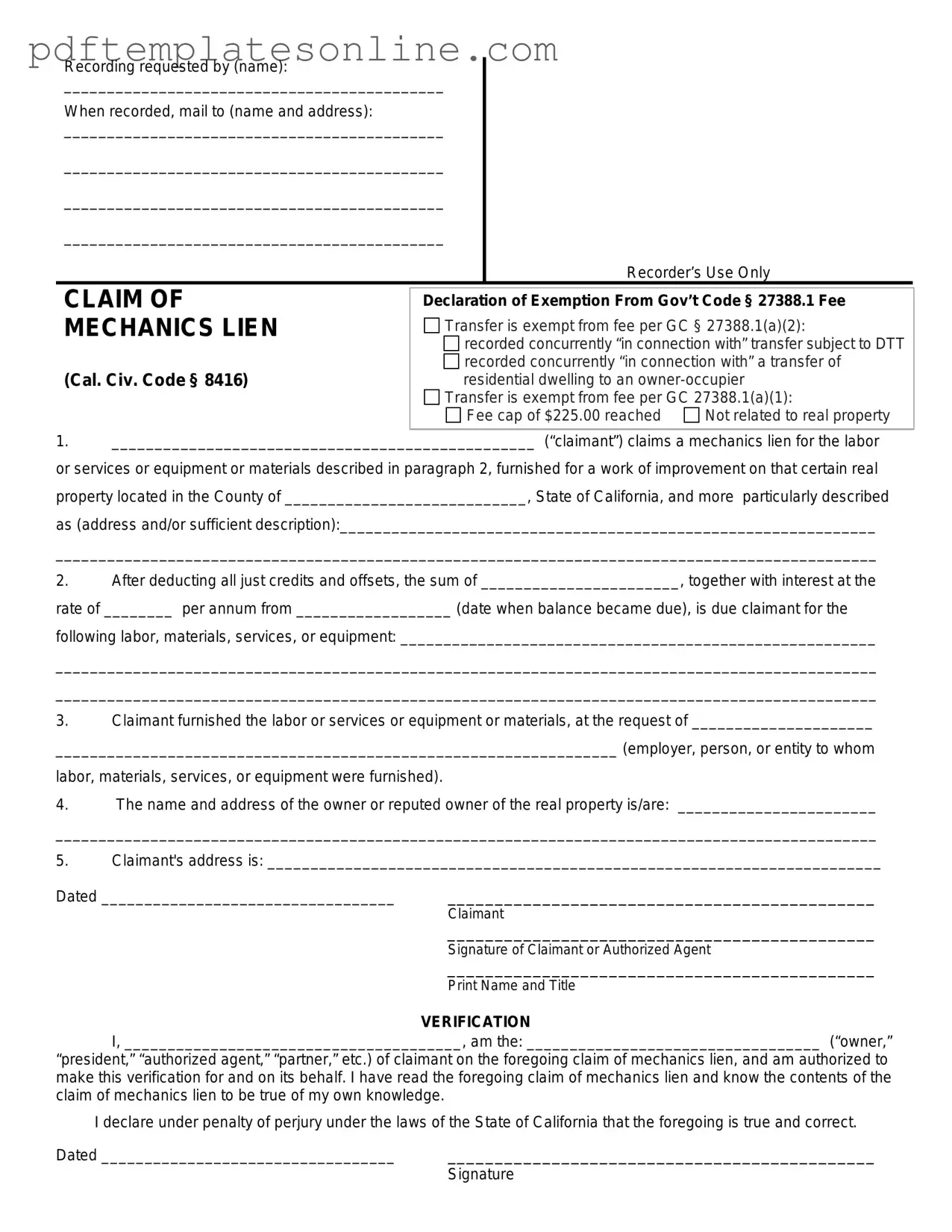Blank Mechanics Lien California Form
The Mechanics Lien California form is a legal document that allows contractors, subcontractors, and suppliers to claim a lien against a property when they have not received payment for work performed or materials supplied. This form serves as a critical tool for ensuring that those who contribute to a construction project are compensated for their efforts. Understanding how to properly utilize this form can protect the rights of workers and uphold fair business practices in the construction industry.
Access Mechanics Lien California Editor Now
